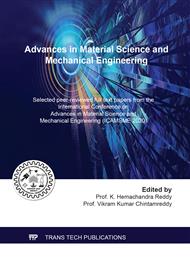p.84
p.90
p.99
p.109
p.116
p.121
p.131
p.137
p.143
Damping Performance of Polychloroprene Rubber for Unconstrained Damping Applications
Abstract:
Damping properties are crucial in determining the dynamic structural response. In this paper, the experimental results for Neoprene rubber of 40, 50 and 60 shore A hardness are reported in view of improving structural damping to control noise and vibrations. Additionally, the system loss factors of the unconstrained layer damped structures of same material were predicted by Ross-Kerwin-Ungar equation to validate the obtained experimental results. The results showed that Neoprene rubber (also known as Polychloroprene) of 60 shore A showed better static and dynamic characteristics than those of the 40 and 50 shore A hardness. The system loss factor results reached the saturation when the applied viscoelastic layer thickness was increased from 40 mm to 50 mm in unconstrained damping. As such, the proposed method can help to build a database of the properties of various materials which are applicable in the design of noise and vibration control.
Info:
Periodical:
Pages:
131-136
Citation:
Online since:
May 2021
Keywords:
Price:
Сopyright:
© 2021 Trans Tech Publications Ltd. All Rights Reserved
Share:
Citation:


